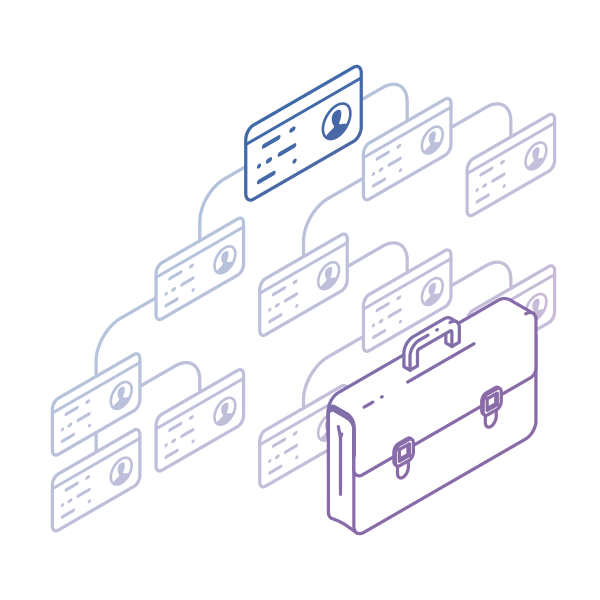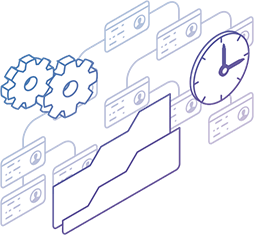The secret weapon in your arsenal for thriving in a fast-paced, cutthroat market is the sheer efficiency of your value delivery system. So, how to achieve an efficient value delivery system? This is where workflow management comes into place.
Let's get started on building a workflow that not only withstands the test of time but also propels you to the forefront of industry excellence!
What Is Workflow Management?
Workflow management is the practice you use to structure, define, and automate your business processes. It involves orchestrating work activities and routing data from one step to the next until a process is complete.
It ensures that your work passes from initiation to completion in an organized manner, facilitating increased efficiency and the ability to monitor and improve upon processes. By understanding and optimizing workflows, you can better align your resources, manage time effectively, and enhance the overall productivity of your teams.
In your daily operations, workflow management can take various forms. You might use it to streamline administrative functions, manage product development, or handle customer service requests.
Why Is Workflow Management Important?
Workflow management is a cornerstone in ensuring that your business operates efficiently. When you implement effective workflow management, it allows you to map out and streamline your processes, which leads to a host of benefits:
- Increased Streamlining: It provides clear visibility into each stage of a process and helps to reduce process redundancies.
- Clarity in Roles and Responsibilities: It clearly explains individual roles and responsibilities.
- Enhanced Accountability: Tracking work progress is easier, so you can ensure accountability at each stage. It improves accountability and ownership, minimizing the confusion and overlap in your team’s efforts.
- Improved Efficiency: With workflow management, you can identify and eliminate bottlenecks in your processes and reduce manual tasks, leading to faster execution.
- Consistency in Quality: Well-defined workflows lead to consistent output. Standardization of a workflow reduces the likelihood of errors and maintains the quality of the deliverables.
- Better Planning and Service Delivery: Optimizing your workflow management supports the overall alignment between strategic portfolio priorities and execution activities.
- Adaptability: Flexibility to change workflows as businesses need to evolve.
By integrating a workflow management system, you're investing in a system that optimizes your day-to-day operations, ensuring that teams contribute effectively to your organization’s strategic goals.
Key Components of a Workflow Management System
Every component in a workflow management system plays a crucial role in ensuring streamlined operations. Understanding these essential elements can help you efficiently organize and improve your business process management practices.
People
The individuals responsible for task execution and decision-making form the core of your workflow. It's essential that every participant knows their roles and responsibilities to prevent bottlenecks.
Inputs
Inputs are the resources you need to initiate your workflow. They can range from raw data and information to materials and requests. Ensure that your inputs are clear and accessible to facilitate smooth workflow operation.
Outputs
Outputs are the end products or results of your workflow. They can be reports, services, or products. Outputs should meet designated quality standards and contribute to your business goals.
Visualization
Effective visualization tools such as kanban boards or flowcharts can enhance your workflow management. They help map out the process and identify process areas for improvement. Use visualization to keep all stakeholders aligned and informed about the workflow's progress.
Types of Workflow Management Systems
Utilizing tools and strategies for workflow management can save time and ensure consistency in your work output. Here are four of the commonly employed workflow types.
- Sequential Workflows: In this type, tasks follow a predefined order, with one task starting only after the previous one is completed. It is often used in linear processes where tasks have a strict sequence.
- State Machine Workflows: These workflows include a series of steps that need to be completed but not necessarily in a sequential order. They are event-driven and change states based on specific conditions or triggers. These workflows are often used for complex processes with multiple decision points.
- Parallel Workflows: In parallel workflows, multiple tasks can be executed simultaneously or independently without strict sequencing. This can speed up processes and enhance efficiency.
- Ad Hoc Workflows: Ad hoc or Agile workflows are flexible and allow participants to define and execute tasks as needed. They are suitable for situations where processes could be more structured and predictable.
3 Workflow Management Practices that Drive Excellence
At its core, workflow management involves the identification of repeatable patterns of activity, streamlining processes, and implementing the best strategies for work execution.
Here’s a sample of the capabilities packed in Businessmap (formerly Kanbanize) that transcend the possibilities of ordinary workflow management systems.
Reimagined Visualization Capabilities
Did you know that 3 out of 5 respondents in one of the most respected surveys in the Agile domain believe that improving end-to-end visibility and traceability would be most valuable to increase their agility?
You need to visualize complex processes and establish a clear understanding of various connections to improve coordination and cross-functional collaboration. That merely scratches the surface of what a software solution such as Businessmap offers in terms of its workflow visualization potential.
In Businessmap, you can visualize the workflows of not one but all teams pertaining to multiple projects and link those to higher-level outcomes. This comprehensive structure enables monitoring the execution of your company’s objectives in real-time.
A full project and portfolio transparency will help you understand complex dependencies between projects, teams, and external partners, highlight process impediments promptly, improve the granularity of work execution to start analyzing process performance and speed up delivery.
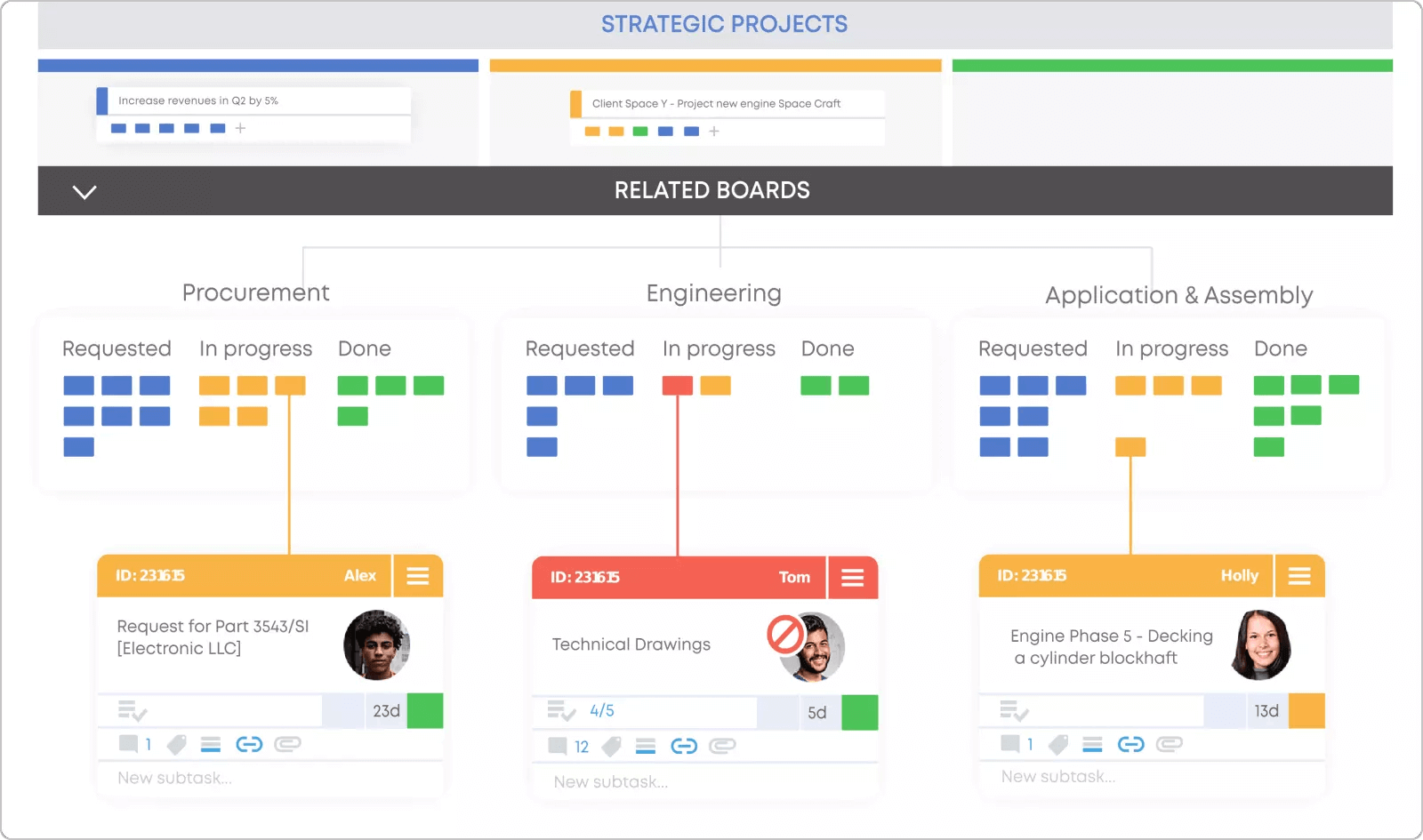 Example of workflow visualization and management capabilities in Businessmap
Example of workflow visualization and management capabilities in Businessmap
Next-Level Automation
Powerful workflow automation can be extremely beneficial in standardizing processes and work execution policies, leading to faster service delivery. Receiving notifications when certain events occur within a work process can dramatically reduce stress levels among team members and help mitigate risk associated with issues as they arise.
Implementing process automation with the Business Rules module in Businessmap can significantly streamline your workflow. It enables the automatic creation and assignment of tasks and the ability to set up custom alerts, making updates and modifications a breeze. Consider a situation where a work item becomes a roadblock, potentially interrupting a whole project. With the system's smart configuration, it can instantly notify the project manager about such disruptions, ensuring swift action and minimal downtime.
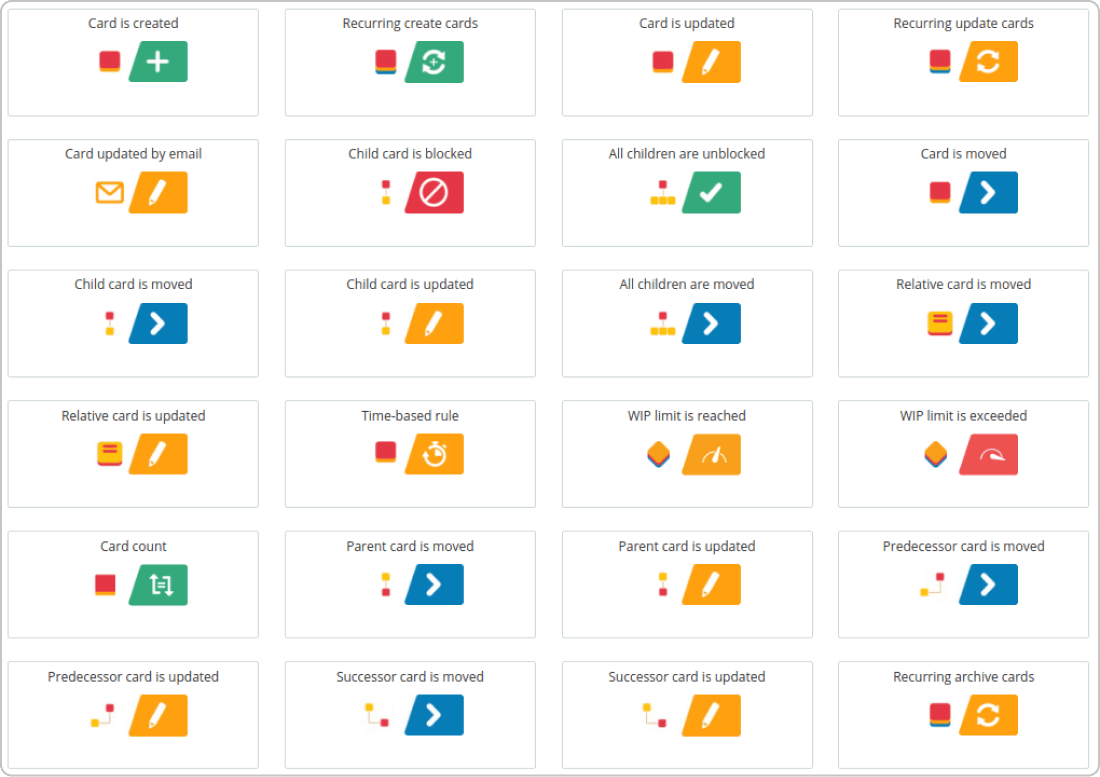 "If-this-than-that" business rules automation capabilities in Businessmap
"If-this-than-that" business rules automation capabilities in Businessmap
Meticulously Measuring Workflow Efficiency
Managing your workflows would not be complete without measuring if you're getting more or less efficient over time. Using the Businessmap embedded Workflow analytics module, you can make use of historical data to not only analyze your workflows’ performance but also optimize process efficiency and embrace continuous improvement.
Identifying the value-adding and non-value-adding steps in a process clearly indicates your workflow's efficiency. In Businessmap we do this by mapping them on kanban boards and then using charts such as Flow Efficiency to calculate how much time our work spends in active vs queue stages. The information guides our efforts to continuously improve our workflows.
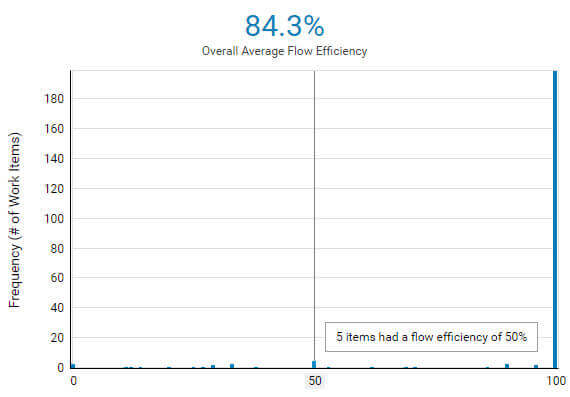 Monitoring workflow efficiency using the Flow Efficiency chart in Businessmap
Monitoring workflow efficiency using the Flow Efficiency chart in Businessmap
Businessmap is the most flexible software
to align work with company goals







